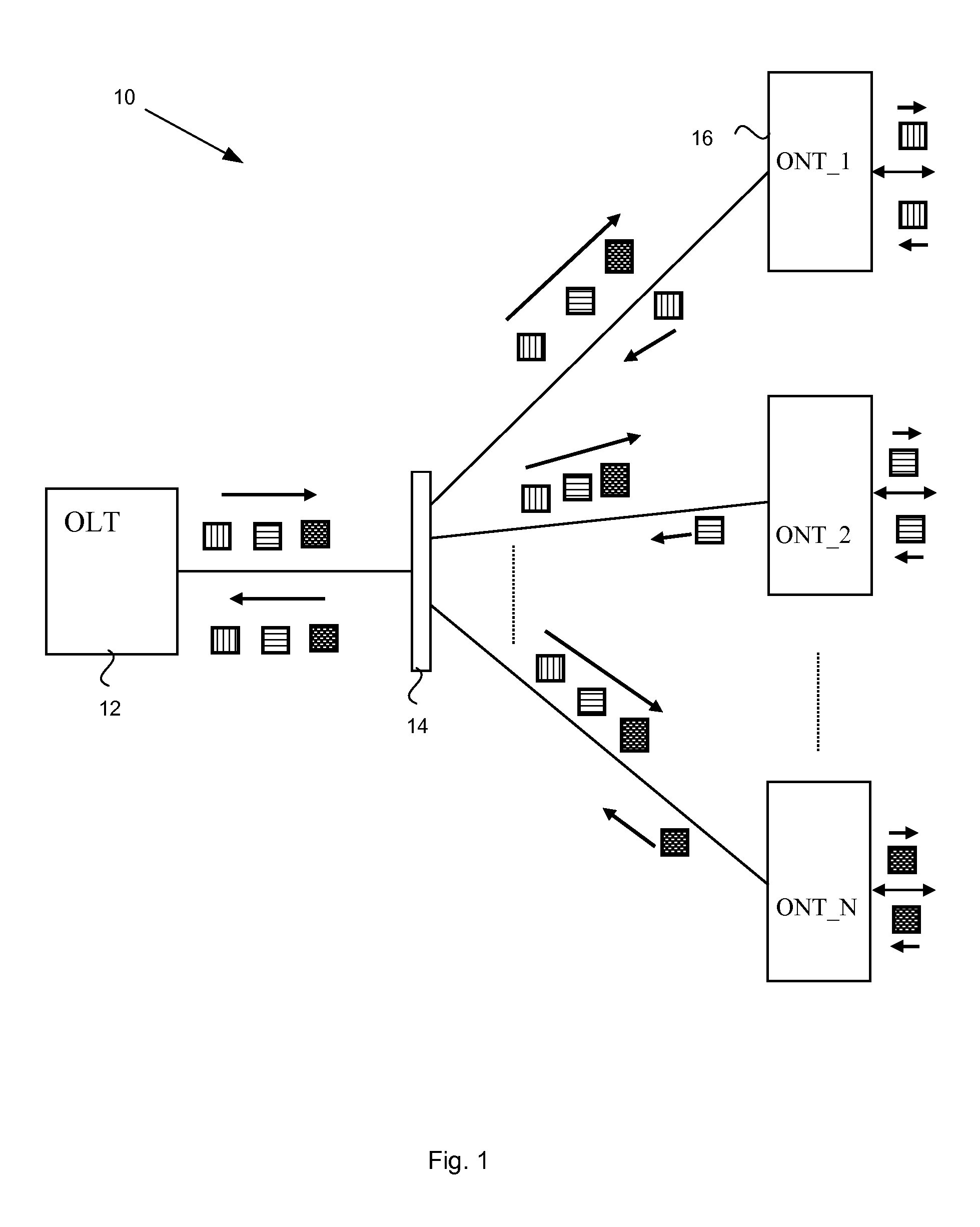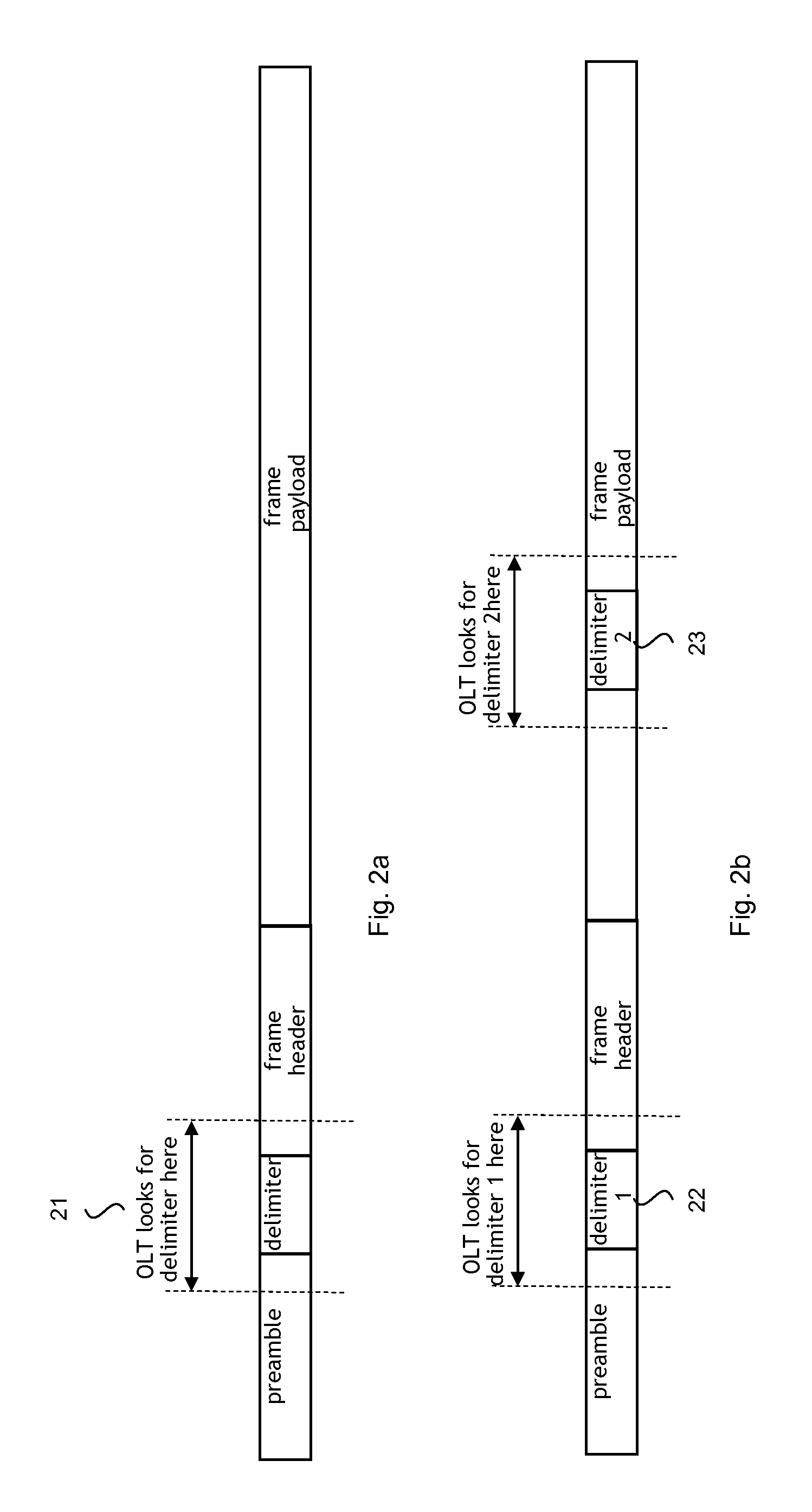Method and apparatus for improved upstream frame synchronization in a passive optical network
- Summary
- Abstract
- Description
- Claims
- Application Information
AI Technical Summary
Benefits of technology
Problems solved by technology
Method used
Image
Examples
Embodiment Construction
[0027]As shown in FIG. 1, PON upstream traffic originating from different ONUs 16 arrives at the OLT 12 in frames separated from each other in time. This separation is a result of scheduling and upstream bandwidth allocation performed by the OLT 12 and communicated to all ONUs 16. For well-designed ONUs 16 and OLTs 12, the worst-case difference between the expected and the actual arrival time of an upstream frame at the OLT is very small and typically does not exceed 1-2 byte periods. This feature allows the OLT 12 to look for the delimiter sequence only in a narrow time window 21, as illustrated in FIG. 2a. This feature is used in the present embodiments to detect additional delimiter sequences inserted at other known positions in the frame, with the same time resolution and without a risk of mistaking a payload bit sequence for the delimiter. Detection of multiple delimiters 22, 23 is illustrated in FIG. 2b.
[0028]A method for providing upstream communications in the PON 10 of FIG...
PUM
 Login to View More
Login to View More Abstract
Description
Claims
Application Information
 Login to View More
Login to View More - R&D
- Intellectual Property
- Life Sciences
- Materials
- Tech Scout
- Unparalleled Data Quality
- Higher Quality Content
- 60% Fewer Hallucinations
Browse by: Latest US Patents, China's latest patents, Technical Efficacy Thesaurus, Application Domain, Technology Topic, Popular Technical Reports.
© 2025 PatSnap. All rights reserved.Legal|Privacy policy|Modern Slavery Act Transparency Statement|Sitemap|About US| Contact US: help@patsnap.com



